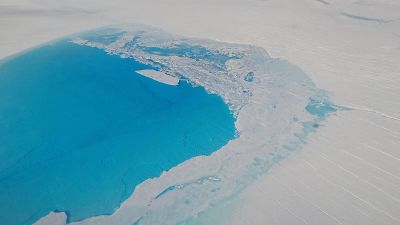World’s largest ice sheet is being threatened by warm summers, Durham University study finds

Researchers in Durham have found the fringes of the world’s largest ice sheet are being threatened by warmer summers in a first of its kind study.
They have found the size of lakes on the surface of the East Antarctic Ice Sheet varied wildly over a seven a year period, and could be key to showing the potential impact of recent climate change on the continent.
The research - led by experts at Durham University - involved the study of more than 2,000 satellite images to determine the size and volume of the lakes, known as supraglacial lakes, between 2014 and 2020.
It showed the volume varied by as much as 200% year-to-year on individual ice shelves - which are floating extensions of the main Antarctic ice sheet - and by around 72% overall.
Lakes were also found to be deeper and larger in warmer melt seasons and formed on some potentially vulnerable ice shelves.
It is the first time meltwater lakes have been studied over consecutive melt seasons across the whole ice sheet, with the study aiming to provide a vital insight into why and where lakes grow.
It is hoped that will help experts understand which ice shelves may be most at risk of breaking up as a consequence of surface melting.
Lead researcher, PhD student Jennifer Arthur, Department of Geography from Durham University, said; “We knew that supraglacial lakes were more extensive than previously thought around the East Antarctic Ice Sheet, but until now only had snapshots of these in some years.
“Our study reveals these lakes change in scale far more than we originally suspected. We were surprised at how much lakes can change year-to-year between ice shelves.
“We explored the potential reasons for this and found that warmer summer air temperatures in Antarctica correlated with more extensive lakes.
“Due to climate change, air temperatures in Antarctica will continue to rise and our study suggests that this will lead to an increase in the number and volume of supraglacial lakes, which will, in turn, put some East Antarctic ice shelves at risk of meltwater-driven collapse.”
What is the East Antarctic Ice Sheet?
The East Antarctic Ice Sheet is the world’s largest ice mass and holds enough ice to raise global sea levels by around 52 meters.
The loss of ice shelves at the edge of an ice sheet means ice further inland can flow faster into the ocean, contributing to global sea-level rise.
Until now, observations of the lakes on the East Antarctica Ice Sheet were rare so it was difficult to assess whether some ice shelves are close to meltwater-driven break up under climate change.
This study, which also involved Newcastle and Lancaster universities and the Georgia Institute of Technology, will help experts understand the formation of supraglacial lakes and predict which ice shelves may be most at risk of collapse.
Understanding the climatic conditions controlling meltwater lake variability will also improve the accuracy of regional climate models used to replicate observations and predict future ice sheet change in Antarctica.